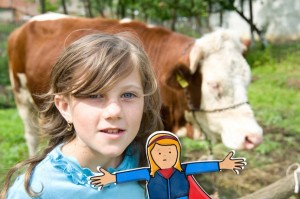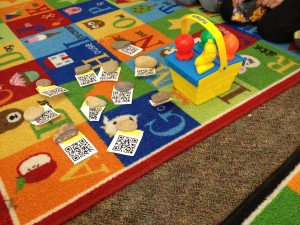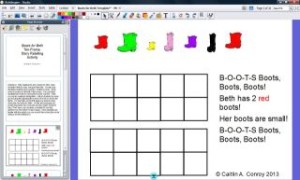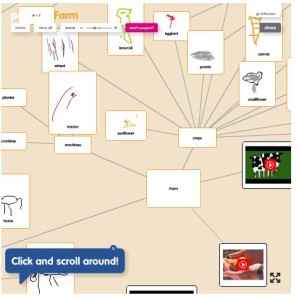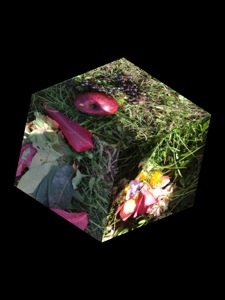 Over the past two weeks, my mental model of inquiry-based learning has developed. One new insight I have gained is that there different types of inquiry. Inquiry can be teacher directed, teacher-student shared or student directed. I also learned that these types of inquiry-based learning exist on a spectrum. On one end of the spectrum is structured, teacher-directed inquiry and on the other end of the spectrum is student-centered, open inquiry. In the middle of the spectrum is guided inquiry that is teacher-student shared. We also learned that inquiry can be multidisciplinary (Topic C, 2018). Continue reading
Over the past two weeks, my mental model of inquiry-based learning has developed. One new insight I have gained is that there different types of inquiry. Inquiry can be teacher directed, teacher-student shared or student directed. I also learned that these types of inquiry-based learning exist on a spectrum. On one end of the spectrum is structured, teacher-directed inquiry and on the other end of the spectrum is student-centered, open inquiry. In the middle of the spectrum is guided inquiry that is teacher-student shared. We also learned that inquiry can be multidisciplinary (Topic C, 2018). Continue reading
Tag Archives: Literature
The Story of an App, Some Books and a Cow?
Background: Apps, Books and Cows… you are probably wondering what these things have in common. It all began back in February when we had two back-to-back non-fiction texts in our Harcourt Trophies reading book, At Home Around the World and Me on the Map. As you can probably decipher from the titles these selections had a geography focus. My passion, as you know is utilizing educational technology, so I wanted to find a project that would incorporate technology and geography. I always wanted to do a Flat Stanley project, so I started exploring my options. I found there was an iPad app that was free and and Edmodo app that cost $20.00. I figured I would try the iPad app out first to see how I liked it. Continue reading
Adventures of a 1st Grade QR Code Scavenger Hunt
Lesson Background
We read the story titled On the Way to the Pond about two friends, Herbert and Tess, who want to go to the pond for a picnic! On the way they misplace their picnic basket, and Tess goes back to find it. She drops rocks along the way so she can find her way back. In math we have been working on addition and subtraction. I thought it would be cute if I sent my students on a QR scavenger hunt around the building. My plan was to attach the QR codes to rocks like in the story, and in the end they would find a picnic basket filled with treats!
Creating the QR Hunt
I used the website QR Voice that I had previously used for my What’s in the Bag? project. I typed in short addition and subtraction word problems, and QR voice generates a QR code. There is a 100 character limit for QR Voice. When students scan the code they hear the word problem read to them. I copied and pasted the QR codes into a word document. I also made a page with the word problems, so the teacher can reread the word problem if needed. Additionally, I included an answer key and a sheet where students can record their responses.
Going on the QR Code Scavenger Hunt
I printed the QR Codes and attached them to rocks with duct tape. During my planning period, I hid the rocks throughout the hallways in the school, and placed the picnic basket full of goldfish crackers at the end. I notified the teachers in my building that I was hiding rocks around the building, and asked them to inform their students. The class had tons of fun scanning the QR codes and solving the word problems. They were super excited each time the spotted a new rock! When they found the picnic basket at the end we went back to the classroom, sat in a big circle, and ate our goldfish crackers! The only snag we ran into was that one of the rocks got stolen!
Purchase the QR Code Scavenger Hunt
If you would like to use this QR Scavenger Hunt with your students, you can purchase it in my Teachers Pay Teachers Store. Enjoy!
What has been your experience using QR Codes with your students?
Giving Reader’s Theater a Technology Twist
A Bit of Background
All primary teachers know that Reader’s Theater is a great way to promote fluency and expression in students’ oral reading. Recently, we read two different pieces of literature in class that lend themselves nicely to Reader’s Theater. The first story, Try Your Best, is a realistic fiction story composed of mostly dialogue between characters about kids at a summer camp. The second story, Did You See Chip?, was a play about a girl who moves to the new city, looses her dog, and makes new friends on her journey to recover her missing pup! I wanted to try incorporating technology into my students’ Reader’s Theater experiences. For these two projects I selected two different tools, Voki, a web based tool, and Puppet Pals 2, an iPad app. Continue reading
Introducing Students to Story Elements through Comics
Lesson Background
We read a delightful story titled Space Pup, about a super hero dog who rescues a bus that is stuck in the mud. I thought it would be fun to challenge students to extend the story by creating their own Space Pup adventure. I thought I could introduce my students to story elements by having them create a comic strip. Continue reading
Using ActivInspire to Create a Cross-Curricular Lesson
Lesson Background
In class we read the story Boots for Beth about a pig named Beth. At the beginning of the story Beth can’t get her boots on because they are too small. Throughout the story Beth’s animal friends offer their boots, but none of them are right for Beth. At the end of the story the friends surprise Beth with a new pair boots. Our focus reading comprehension skill for the week was retelling. I knew I wanted to work this skill into the project if possible.
In math we have been working a lot with ten-frames. I thought it would be fun for students to drag boots onto the ten-frame instead of boring counters. I decided to use ActivInspire to create this presentation.
Mind Mapping with Popplet
This week we read an informational text titled All That Corn in our Harcourt Trophies reading books. On Day 2 of the Harcourt Trophies plan it recommends that the teacher help students create a concept map about farms. I have been eager to use a new, web-based, mind mapping tool with my students and I saw this as the perfect opportunity. When I did my action research during my graduate studies with my PreK students, I used Kidspiration software for mind mapping. Kidspiration is a good software package, but for the purposes of this blog I want to make sure that I am showcasing applications that are free and accessible to everyone. Plus, I know there are many mind mapping tools that have come out in the past few years, so I wanted to familiarize myself with the new tools out there. The world of educational technology is ever-changing, so it is important to stay up to date!
Continue reading
Creating an Interactive Virtual Photo Cube
Lesson Background
This particular week we read the story, Todd’s Box, about a boy who takes a walk with his mother. Along the way he collects artifacts from nature, and he saves them in a box. At the end of the story he surprises his mom with the box. In math we were still working on subtraction, which was the focus of our Jack and Rick Subtraction stories the previous week. Incorporating science was a logical choice based on the reading selection for the week. For this project I decided to have students go on a nature walk and take digital photos of what they found. Then students created their own virtual box to showcase the artifacts they found on their nature walk.
Continue reading
Using iMovie to Turn you Students into Music Video Stars!
Project Background
We read a nonfiction story titled Ants in reading. An exciting addition to our classroom was an ant farm this week. On Day 4 in the Harcourt Trophies lesson plan students sing “The Ants Go Marching”, and are engaged in some phonemic awareness activities using words from the song including identifying rhyming words. I thought this song was the perfect opportunity to tie in music, art, math and literature.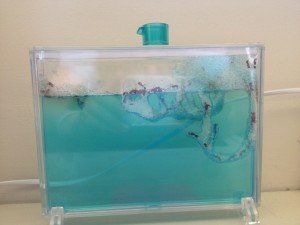
Continue reading
Using PowerPoint to Act Out Mathematical Story Problems
Lesson Background
This particular week students read the story Jack and Rick. A charming story about two lovable characters, Jack, a rabbit and Rick, a bear who find themselves on opposite sides of a river. The pair have to problem solve to get on the same side of the river, so they can play together. In math students have been working on subtraction with an emphasis on story problems. For my cross-curricular project I had students work in groups to create their own taking away story problem. I thought using PowerPoint would be the perfect tool for this project, because students can deepen their understanding of subtraction by using animation to demonstrate taking away.
Continue reading

